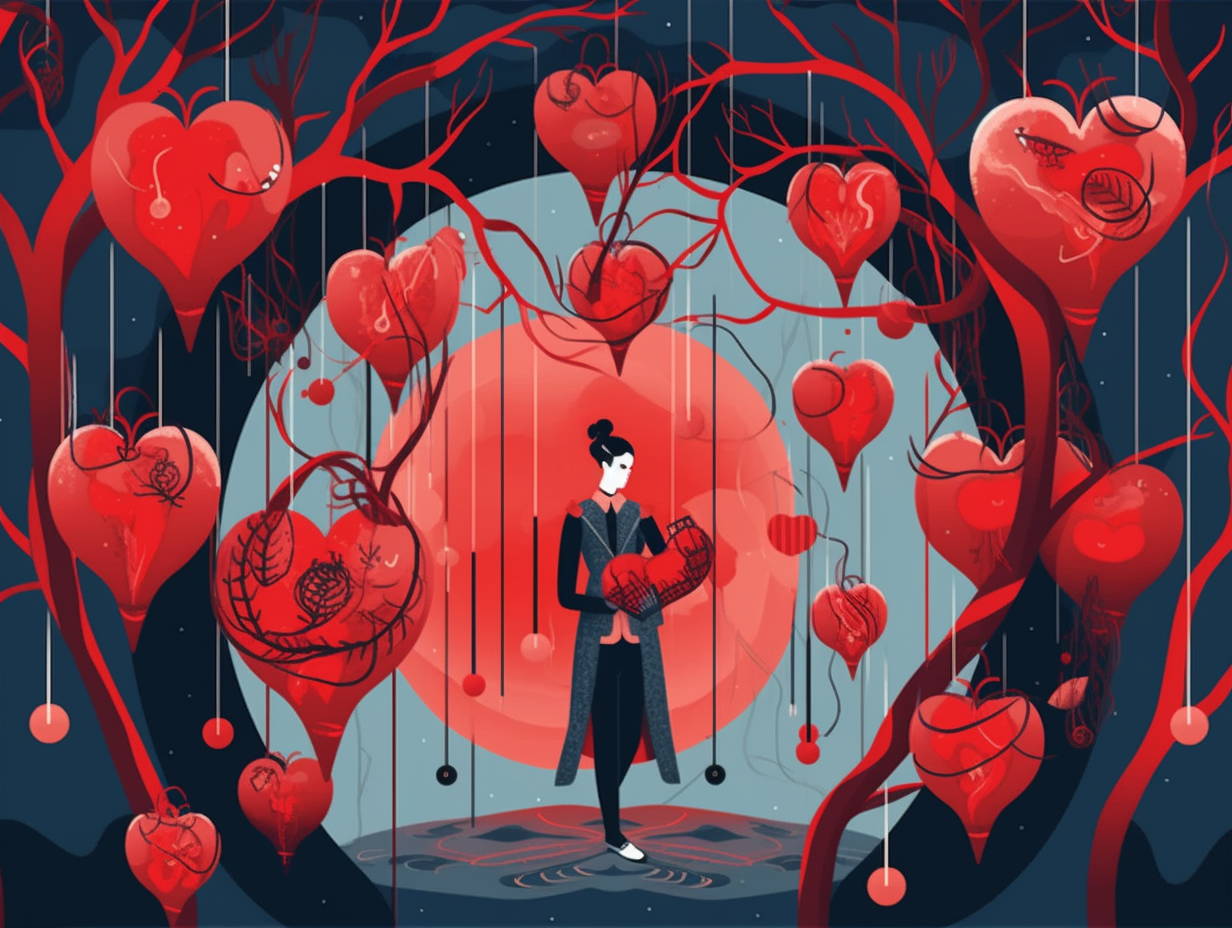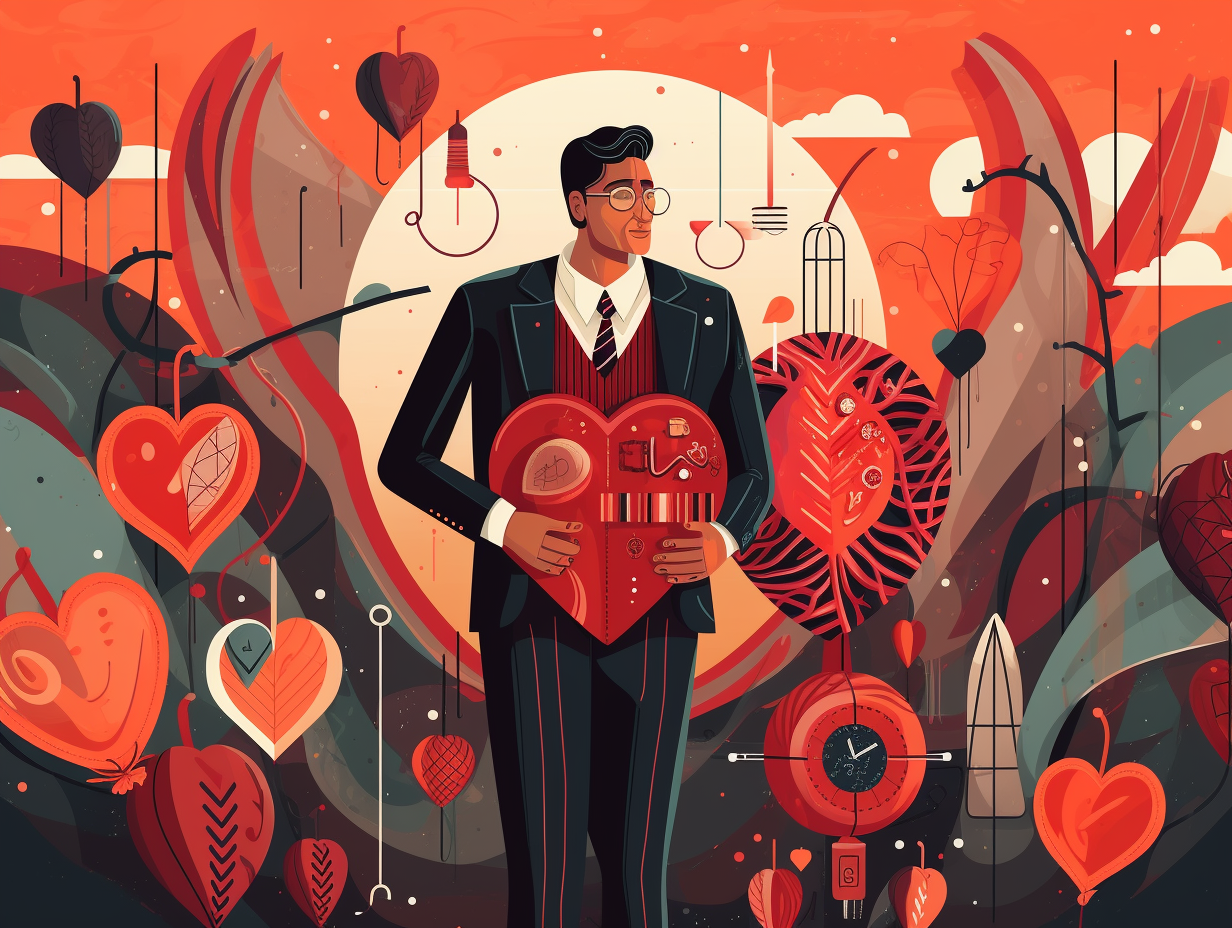Discover the Wonders Within: 22 Amazing and Fun Facts About the Circulatory System

1. Stretchy Vein Superheroes
Veins are like the Stretch Armstrong of the human body, putting your silly putty to shame: Astonishingly, a typical vein can stretch up to eight times its lumen diameter, allowing it to adapt to changes in blood flow and pressure like a circulatory superhero.
Source => blog.transonic.com
2. Big Hearts and Stroke Volumes
You may have heard of "big hearts," but did you know that some people's tickers are actually more grandiose? Put down your monocle, and listen: larger individuals tend to have greater stroke volumes, meaning the amount of blood pumped by their left ventricle in one contraction may range between 50-100 ml. In fact, with a cardiac output of 5.5 L/min and a heart rate of 87 beats/min, a voluminous person might pump around 63.22 ml/beat—talk about embracing heart and soul!
Source => homework.study.com

Did you know that your heart pumps enough blood in a day to fill a small car's fuel tank several times? Discover more incredible heart facts!
=> Fun Facts about The-Heart
3. Growing New Blood Vessels
It's no secret that our blood vessels can be a "Hearty" bunch, branching out in unexpected ways to get the job done: The human circulatory system possesses the fascinating ability to grow new blood vessels even in adulthood, a process significantly impacted by the protein FMNL3, which assists in blood vessel reshaping and formation. This is currently being investigated as a potential key to treating heart failure, diabetes, and peripheral arterial disease.
Source => bhf.org.uk
4. Left Ventricle, the Circulatory Superhero
Your heart's left ventricle is like an overachieving superhero, flexing its muscles and pumping up a storm to ensure every organ gets its fair share of life juice: The mighty left ventricle generates enough pressure to pump blood via the aorta to each organ in our body, delivering oxygen and nutrients, with the coronary arteries even branching off to keep the heart muscles themselves well-fed. So, next time you're amazed by a superhero flick, remember the high-powered action inside your own chest!
Source => nhlbi.nih.gov

5. Heart Pumps 75 Bathtubs of Blood
If your heart were a bathtub connoisseur, it wouldn't waste a single drop: it pumps enough blood daily to fill over 75 bathtubs! The serious scoop: this means approximately 2,000 gallons of life-sustaining blood is circulated every day to transport oxygen and nutrients to all corners of your body.
Source => my.clevelandclinic.org
6. Red Blood Cell Retirement Party
In the world of blood cells, there's cause for many a "red" carpet retirement party - and these events are just spleen-did! Around 5 million red blood cells are sent into a well-deserved retirement every second: Robbed of their vitality after 120 days, these worn-out erythrocytes are swept up by macrophages, primarily in the spleen, and subjected to a rejuvenating spa treatment of remodeling and phagocytosis. Thanks to these expert service-providers, our oxygenated heroes can gracefully exit the circulation having fulfilled their life's purpose.
Source => frontiersin.org
7. The Heart: A Biological Orchestra Conductor
Meet the biological orchestra conductor with a split personality: the heart not only has two chambers to send out invitations for blood to visit (atria), but also two other chambers to kick them back into circulation (ventricles)! But wait, there's more: the heart boasts a rollercoaster of contractions (systole) and relaxations (diastole), and even has its own "little brain" — the cardiac conduction system — orchestrating each pulse independently of the main noggin.
Source => ncbi.nlm.nih.gov
8. White Blood Cells: The Ultimate Escape Artists
Move over, Houdini – white blood cells have the ultimate escape act up their sleeves, or rather, their nuclei: Researchers at the Weizmann Institute of Science have discovered that these immune cells use the force of their nuclei to create large gaps in blood vessel walls, allowing them to slip out and promptly reach infection and inflammation sites. By dismantling structural filaments within the endothelial cells' cytoskeletons, these escape artist cells create holes several microns in diameter, using their rigid nucleus as the all-important key to their great escape. And just like any good magician's act, this unexpected trick may benefit cancer research by identifying metastatic tumor cells that employ similar mechanisms for their invasive disappearing acts.
Source => sciencedaily.com
9. Neutrophils: Body's Ghostbusters
Ever wondered who the Ghostbusters of your body are? Fear not, for the fantastic Neutrophils are on hand to engulf pesky bacteria with their enzyme-loaded proton packs: These skillful hunters are a key part of our immune system, diligently patrolling our circulatory system and using compensating ions to create a hostile environment that makes mincemeat of invading microbes - and they don't even need oxygen free radicals to get the job done!
Source => ncbi.nlm.nih.gov

10. Platelets: The Body's DIY Bandages
When life hands you Platelets, make clot-tail parties: These tiny blood life-rafts can stop the bleeding shipwreck of our mortal injuries by clustering together and plugging up wounds in just 3 to 7 minutes, acting as our body's natural DIY bandages for blood vessels.
Source => my.clevelandclinic.org
11. Overachieving Hearts
Hearts are quite the overachievers, tirelessly working like a bunch of caffeinated worker bees in a beehive filled with Red Bull: In fact, your heart beats around 100,000 times per day, pumping approximately 2,000 gallons of blood, which is enough to fill more than 60 bathtubs!
Source => medlineplus.gov
12. Sherlock Holmes of the Immune System
When our immune system isn't busy fighting off a cold or putting out the fires of the spicy food we dared to consume, it's scouting for potential evildoers in our bodies – working like Sherlock Holmes and Doctor Watson combined: Our immune system has two arms – the innate immune system and the adaptive immune system – that work together to defend us from harmful pathogens and cancer cells. The innate immune system is a rapid-response team, while the adaptive immune system has T and B cells acting like detective agencies, identifying specific features of pathogens and fighting them off; giving vaccines a helping hand in boosting our defenses!
Source => mdanderson.org
13. Heart and Soul vs. Plaque and Arteries
It's all about heart and soul, or in this case, plaque and arteries: Coronary artery disease, the reigning champion of heart diseases in the United States, is caused by an unwelcome plaque buildup in the blood supply to our ticker, leading to angina or even heart attacks – but luckily, we can kick this unwanted guest to the curb through healthy eating and getting our groove on with physical activity!
Source => cdc.gov
14. Circulatory Speed Demon
Step aside, Speedy Gonzales, we have a new speed demon in town: the human circulatory system sends blood on a mind-boggling 720 laps around the body each day, with the heart pumping a whopping 7,200 liters of blood in a mere 24 hours instead of the previously believed 1,900 gallons.
Source => science.blurtit.com

15. Sinus Node: The Heart's Maestro
Did you ever wonder if the Tin Man from the Wizard of Oz had a sinus problem? No, not the stuffy nose kind - the one that makes your heart tick! Here's the beat: the sinus node, located in your heart's right upper chamber, generates an electrical stimulus that sets off a pumping rave for your blood. This heart-throbbing maestro coordinates chamber contractions, with atria and ventricles doing the cardiac dance 60 to 100 times per minute. So remember, that spark of life truly does come from the heart - just like in the Land of Oz, sans ruby slippers.
Source => hopkinsmedicine.org
16. Rhythmic Rollercoaster of the Heart
Ready for a rhythmic rollercoaster? It seems our hearts are like DJs doing sound checks, busting out beats and making us dance to their whimpering wubs, flippy flops, and breathless booms: Through tests like ECG, Holter monitor, event recorder, echocardiogram, and electrophysiological testing and mapping, doctors can identify heart arrhythmias and ascertain their underlying causes, such as heart disease or thyroid disease. Treatment may vary from medications and therapies to catheter procedures or even heart surgery, depending on the type of arrhythmia and potential complications. Remember, there's nothing funnier than following your doctor's orders and keeping that heart of yours grooving to the right rhythm!
Source => mayoclinic.org
17. Laughter vs. Circulatory Delivery Service
Whoever said "laughter is the best medicine" clearly never met the circulatory system – the body's busiest delivery service: Responsible for transporting oxygen and nutrients to each and every cell, the heart works tirelessly, pumping blood through an intricate web of arteries, veins, and capillaries, clocking in approximately 100,000 beats per day to keep all the bodily functions in tip-top shape!
Source => britannica.com
18. Capillaries: The Ultimate Connectors
If capillaries were a social network, they'd be the ultimate connectors, always ready for a meetup, but never up for partying with the skin or the eyes: These microscopic blood vessels bridge the gap between arteries and veins, exchanging crucial materials with tissue cells. In fact, about 5 percent of the total blood volume is mingling in these tiny tubes at any given moment. You won't find them in the epidermis or the lens and cornea of the eye, though, because they're busy supporting other vital functions in our body's wild and diverse ecosystem.
Source => training.seer.cancer.gov
19. Built-in Pacemaker: The Conduction System
If the heart were a club, it would be lit with its very own DJ pumping up the beats: Enter the conduction system, the heart's built-in pacemaker setting the rhythm and ensuring that both the VIP upper chambers and the dance floor lower chambers communicate for a flawlessly coordinated cardiac performance.
Source => cincinnatichildrens.org
20. Rockstar Heart Drummer
If the human heart was a drummer, it would be the ultimate rock star, beating out the rhythm of life in an epic, lifelong solo: With an impressive 100,000 beats per day, tallying up to 36 million beats each year, the human heart truly rocks out to a staggering 2.5 billion beats in an average lifetime, slightly outperforming prior estimates!
Source => wonderopolis.org
21. Oxygen-Carrying Vocal Divas: Red Blood Cells
Ever wish you had backup singers to follow you around, belting out epic tunes as you conquer the day? Well, your body's got its own version: miniature, oxygen-carrying divas pumping out their own number at a rapid pace: Behold, your body produces about two million red blood cells every second, originating from stem cells called hemocytoblasts in the red bone marrow. It takes about two days for these cells to mature, transporting oxygen to your body's tissues while exiling carbon dioxide to the lungs. Give it up for the unsung heroes of the circulatory chart-toppers!
Source => medlineplus.gov
22. Red Blood Cell Uber Drivers
Red blood cells are like tiny little Uber drivers making sure oxygen gets to the party and then dragging the rowdy carbon dioxide back home: Hemoglobin, the protein within red blood cells, holds onto oxygen like a tight grip on the aux cord during a road trip, distributing it everywhere it needs to go in the body, before swapping it out for its less-welcome cousin, carbon dioxide, and safely delivering it back to the lung's exit gate for a swift departure.
Source => floridahealth.gov
Related Fun Facts




















